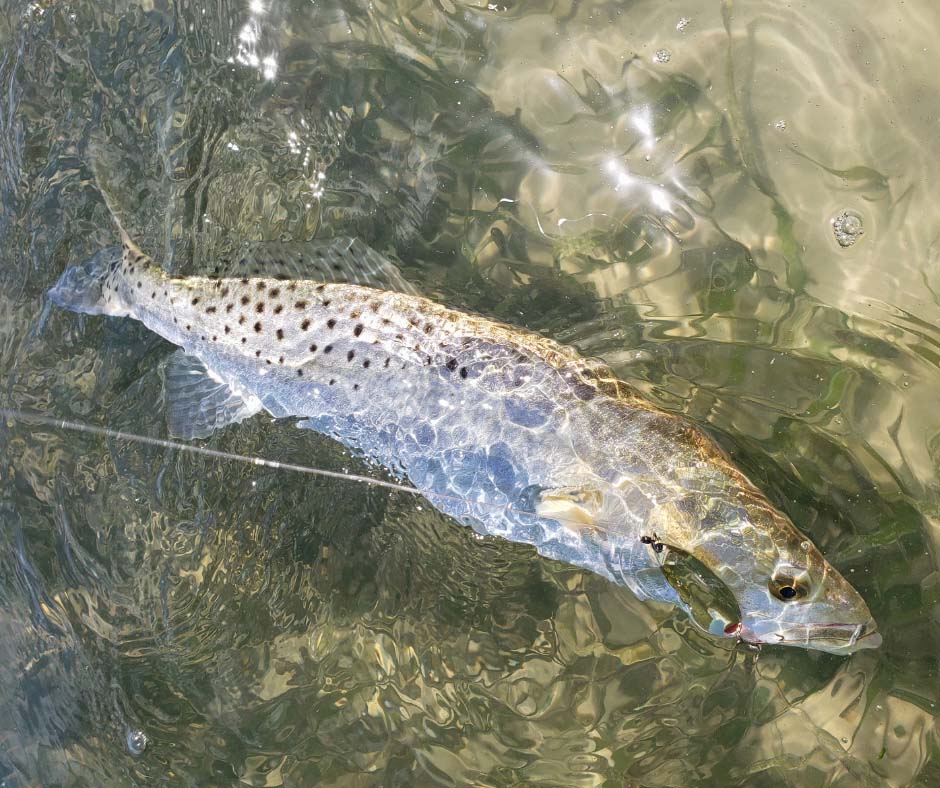Surveying to Help the Spotted Seatrout
March 11, 2024

The spotted seatrout
BATON ROUGE - The spotted seatrout is a popular catch on Louisiana’s coast. While not fished commercially, this silvery denizen of shallow coastal waters is well known to the state’s large recreational fishing community.
But when the numbers of the spotted seatrout, which is also known as the speckled seatrout, or simply specks, began to decline several years ago, state resource managers started to look for a way to rebuild the stock.
This is one of the roles of fishery managers, said Steve Midway, an associate professor in the Department of Oceanography & Coastal Sciences, or DOCS. Midway and fellow researchers including then DOCS Masters student Dave Smith and Louisiana Sea Grant’s Rex Caffey, assisted the Louisiana Department of Wildlife and Fisheries, or LDWF, in addressing the decline of specks. Smith and Midway recently published a paper about their work in the journal Human Dimensions of Wildlife.
Their findings underline the significance of public input in resource management, particularly because, in this instance, final recommendations were suggested not by the managers but by survey respondents themselves.
Historically, the state has had very liberal catch regulations on the popular seatrout, making public support for any changes even more significant. “You need to have public buy-in when people are interested in the outcome of a management regulation,” Midway said.
So Midway and his team helped LDWF officials determine potentially acceptable scenarios by creating a series of surveys to gauge the opinions of fishers and other stakeholders. They included various management options—a series of combinations of limits on fish size and number caught—that would help reach the desired goal of a 20 percent reduction in fish harvest.
The first of these surveys were administered in person, in public meetings about the subject, and an interesting result emerged: attendees expressed the most support for a potential creel (number of species caught) limit of 15 and size limit that wasn’t on the original list of options.
Officials added this option to the online surveys, and found it to be the most popular option there as well.
Midway said assessing opinion in this way can be an invaluable tool in public resource management, even if managers are not able to directly translate survey results into policy or regulation. “The idea is that we get as close to [the survey results] as possible. I think they replicate a little bit of the democratic ideals that people in this country are used to.”
The paper notes that the multiple modes and means of conducting surveys contributed to the clarity of the results, as it captured responses that might not have been collected, or been marginalized, in a traditional survey. These responses led to the creation of the most popular option.
The paper also notes that the methods used by survey administrators sought to get opinions from a variety of people, from the so-called “high avidity” anglers, who are deeply invested, to the more casual sportsman.
“We were able to capture regulatory preferences from angler groups that have a much higher level of investment…” said Smith, who is now a PhD student in Midway’s lab. “When considering the importance of the management decision our surveys surrounded, seeking input from these segments was crucial in developing a sustainable management strategy and delivered novel insights surrounding the fishery.”
Once all the survey results were tallied, the results were given to LDWF officials so they could make recommendations to their advisory panel on the best way to address the management of the speckled trout fishery.